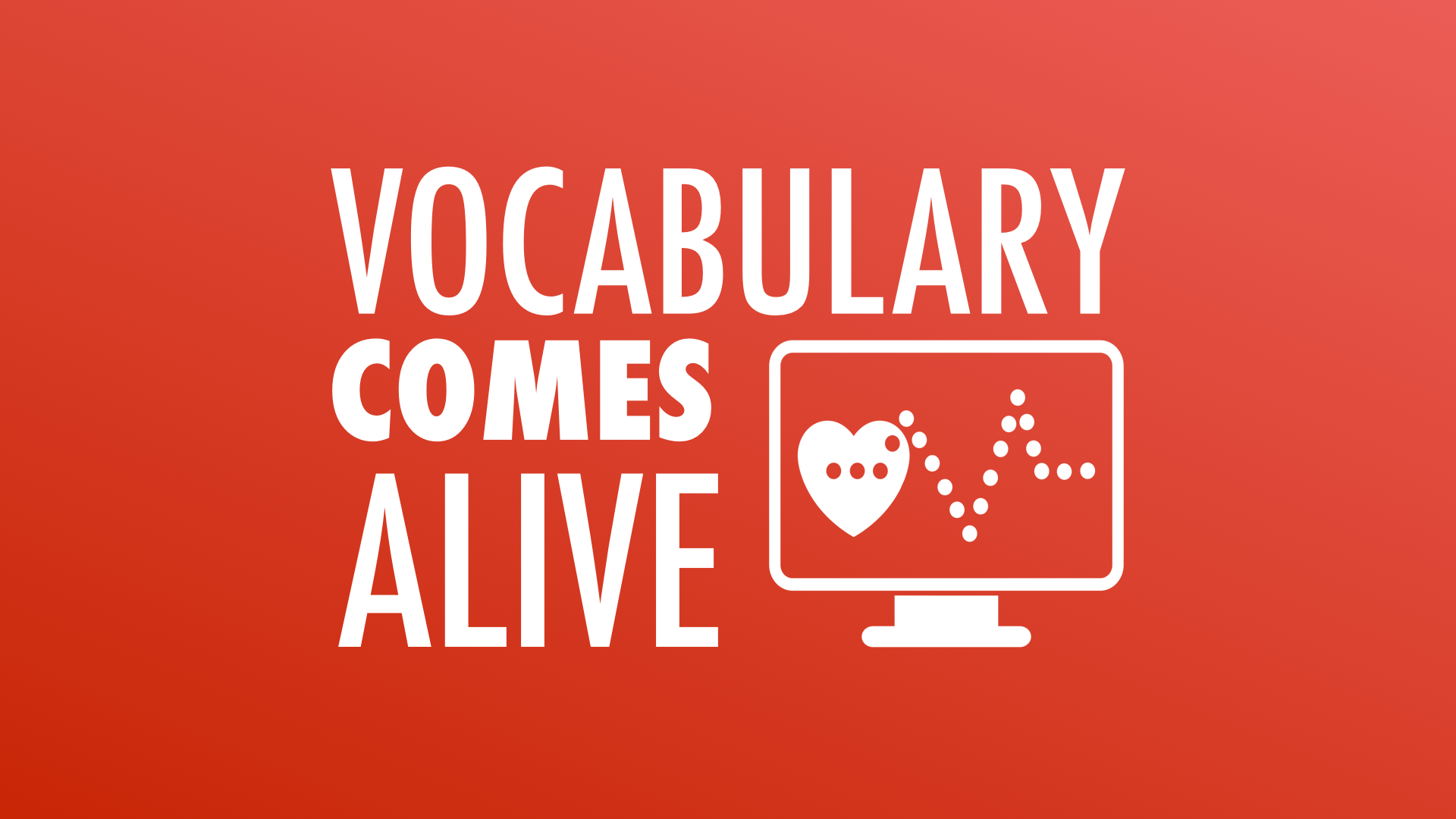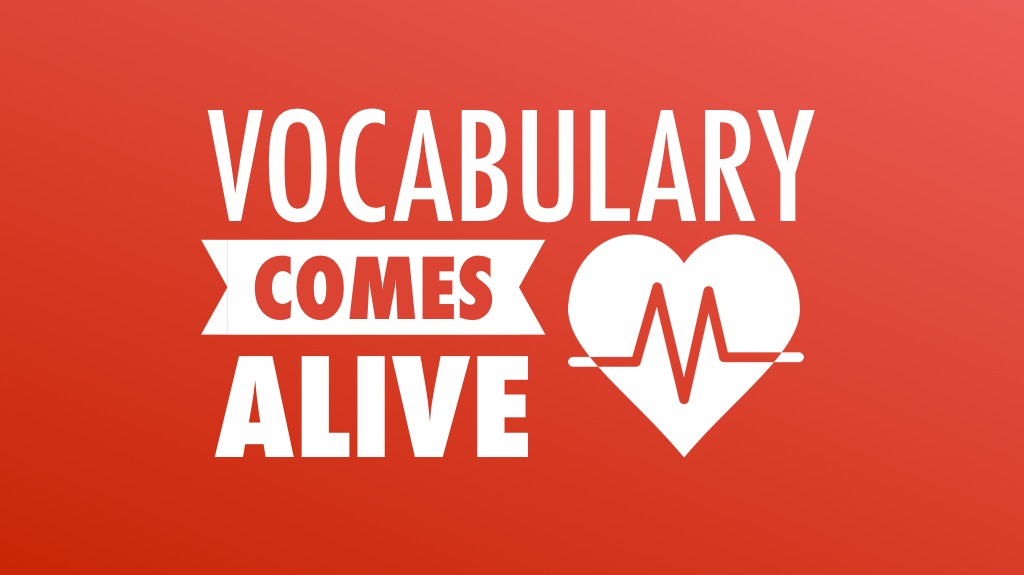
Learning academic terms and phrases doesn't have to be boring. In fact, learning new words should be exciting and fun! It's time to start looking at digital ways to expand students' vocabulary. Let's explore free websites and iPad apps that are so irresistible, students can't help but be motivated to learn. We'll take a good look at representing words visually, creating multimedia, fueling collaborative learning, and playing games. Yes, the technology can be mesmerizing, but it's important to use techniques and strategies proven to work. That's why pairing technology with Robert Marzano's Six Steps for Vocabulary Instruction is a powerful combination.
We want new terms to stick with our students. We want them to be able to understand, remember, and retell the meanings of vocabulary words.
Dr. Robert J. Marzono's 6 Step Process for Teaching Vocabulary
Provide a description, explanation, or example of the new term.
Use Poll Everywhere to assess and activate background knowledge.
Make an impression by changing your voice! There's Voice Changer Plus for iOS and Voice Changer with Effects for Android. Check out Songify to turn your spoken words into an auto-tuned song for iOS and Android.
Photos and videos can be very help for explaining new words. Find public domain clipart and photos at pixabay.com.
Video can be very helpful in explaining a term. YouTube has videos about pretty much everything.
If your vocabulary is linked to a geographic location, consider taking students there using Google Maps or Google Earth.
Use Google to find copyright-friendly images. After doing an image search, click Search Tools. Click Usage Right and choose Labeled for Reuse. The resulting images are likely Creative Commons licensed works, which probably require you to give credit to the owner.
Chatterpix Kids for iPad and blabberize.com can be fun ways to provide descriptions or examples of new terms by giving any image a talking mouth.
Capture what you've created as QR code so students can scan and hear or view again and again. A great scanning app is i-nigma and you can scan on a laptop using webqr.com. Create QR codes at goqr.me. Read more about QR Codes.
Ask students to restate the description, explanation, or example in their own words.
Tellagami for iPad and voki.com provide students with a talking avatar. They can make the avatar explain a vocabulary word.
Here’s a Google tip: Enter define and the word you want to look up into Googles search field. Google will display the word’s definition at the top of the results page.
Something as simple as using an iPad’s or laptop’s camera can be useful for students recording themselves.
Student can narrate a series of images using 30hands, Shadow Puppet Edu, Adobe Voice Educreations for iPad. Pixiclip.com is a free interactive whiteboard you can record and play back.
Collect student media using Padlet. Watch Tony's video to learn a lot more about it.
Ask students to construct a picture, pictograph, or symbolic representation of the term.
Constructing a representation of a vocabulary word using emojis can really make students think about the word and how to describe it using limited symbols. Use a mobile device's emoji keyboard and use CopyPasteCharacter.com or Emojipedia.org to copy emojis to use on a computer. Wondering what an emoji is supposed to be? Google the word “translate” and paste in a copied emoji. Then click the horn to hear a description.
Use AutoDraw.com to sketch clipart that can be replaced for nicer drawings. You can fill in the drawings with colors and add text.
Wondering where Tony gets those symbols he uses to represent the six steps? He got them from The Noun Project. Read about it and find out about recoloring the images you get from the site.
Draw pictures of words when you play SketchParty TV for iOS. It requires your iPhone or iPad to be mirrored to an external display. Options for mirroring include using an adapter, an Apple TV, or software on Mac or PC like Reflector.
If you’re using a Mac, PC, or Chromebook, you can use Google Slides to work collaboratively on the same set of slides. Each slide can have a different word and different groups can work simultaneously on the same presentation. In the end you have a great learning tool and study aid!
Engage students periodically in activities that help them add to their knowledge of the terms.
Trading Card Creator is available for iPad and online as a website It provides guiding questions to help students think deeply about vocabulary, people, and places.
Using a structure like the Frayer Model can help students show what a word is by listing its essential and nonessential characteristics. Here's Tony's Google Sheets template and his Google Slides template. You can give students the link so they can collaboratively work on the same document.
It’s so easy to make simple posters about words using Pic Collage for iPad and Android. If you’re on a Mac, PC, or Chromebook, try PowerPoint, Keynote, Google Slides, Pizap or Pixlr. When using Pixlr, begin by selecting Collage. Pixlr is a web-based app and a mobile app that's available for just about any platform. Watch Tony's video about producing infopics.
A silly way to learn more about a term is to make and play word blank games like Mad Libs. Make your own at wordblanks.com. Tony made this one about the Grand Canyon.
Periodically ask students to discuss the terms with one another.
Create a screenshot of a text conversation using iFakeText.com.
Use the PuppetPals HD app for iPad to stage conversations. The puppet shows can be saved as a video in iPad’s Photo Library. The free version has limited characters and backgrounds. To gain access to lots more characters and backgrounds and to have the ability to use any photo in your puppet show, get the Director’s Pass for $2.99.
Edmodo.com can provide a safe online place for students to discuss their vocabulary words.
Represent terms with emoji and have students discuss why they chose specific emoji characters. You can copy emoji character from CopyPasteCharacter.com.
Involve students periodically in games that enable them to play with terms.
Input words and definitions into Quizlet.com. Give students the URL to the set of words and Quizlet provides a variety of ways to interactive with the terms and definitions. Here’s one Tony made for Arizona vocabulary.
Want to play Bingo? Generate Bingo board with your vocabulary at bingobaker.com.
Input a set of words and definitions into crosswordlabs.com. You’ll get a URL you can share with students. They can complete the crossword on an iPad, Mac, PC, or Chromebook.
Play classroom Jeopardy with JeopardyLabs.com. Input questions and answers. Then display the board on your projector screen and play in teams.
Up to four players can face off in Futuba for iPad. You can input your own words and photos. Photos appear in the middle of the screen and players try to be the first one to identify the term.
Gamify your class by using Kahoot. Teachers create quizzes at getkahoot.com Students visit kahoot.it in their web browser on any device and enter the PIN provided by the teacher.
An alternative to Kahoot is Quizizz.com. Quizizz display the question on each student's screen, but students complete the quiz at different times.
Play classroom Password with the help of Game Show Soundboard to reinforce vocabulary! Simply create a slideshow in PowerPoint or other slideshow software on a computer that is mirrored to a projector. Put one vocabulary word on each slide. Or, write words on large cards that a student can hold up. Start Game Show Soundboard’s 60 second timer. Pairs of students try to guess as many words as possible. One player is the guesser and has his back to the projector screen. The other is the clue giver. Clues can only be one-word guesses. Use Game Show Soundboard’s plus button to keep score.
For even more fun, turn what you say into your iPad’s microphone into a song using Songify for iPad ($2.99).
Read more about teaching academic vocabulary in this ASCD article.
KEEP IN TOUCH WITH TONY
Follow on him Twitter: twitter.com/tonyvincent
Like Learning in Hand on Facebook: facebook.com/learninginhand
Follow his boards on Pinterest: pinterest.com/tonyvincent
Circle him on Google Plus: plustony.com
Email him: tony@learninginhand.com









